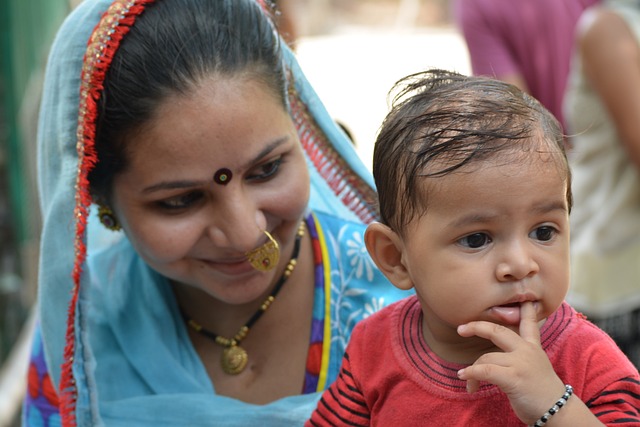Integration of birth spacing family planning services in nutrition programming, an important public health intervention, is often overlooked
By Dr. Sujeet Ranjan
The issue of undernutrition which affects survival, development, health, productivity, and economic growth is a complex and multi-dimensional issue. The multidimensional effects of malnutrition make nutrition interventions imperative to incorporate a multi-sectoral and integrated development approach. Public health studies say that birth spacing plays an important role in nutritional status among children under 5 years of age, with shorter birth intervals increasing the risk of both stunting and being underweight. However, to date, there has been limited documentation on integrating family planning with nutrition programs in India.
According to the recent World Population report released by UNFPA, India has surpassed China in terms of population, with India currently estimated at 142.86 crore (1.4286 billion) and China at 142.57 crore (1.4257 billion). This significant shift in population dynamics marks a significant milestone. To provide context, in 1990, China’s population stood at 1144 million (1.144 billion), while India’s population was 861 million. As of last year, China remained the most populous country globally, with 1426 million people, closely followed by India with 1412 million. However, the United Nations’ 2022 projections indicate a notable shift in the future. By 2050, India’s population is projected to surge to 1668 million (1.668 billion), surpassing China’s projected decline to 1317 million (1.317 billion). This trend of India surpassing China has been anticipated for some time, though the expediting factor lies in China’s slowing population growth. Earlier this year, the National Bureau of Statistics (NBS) in China reported a decrease of 850,000 individuals in 2022 compared to the previous year.
India has an enormous problem of malnourishment, being home to almost 25% of the world’s malnourished children. A study by the International Food Policy Research Institute (IFPRI) shows that child marriages and underage pregnancies are making a sizeable contribution to this problem, drawing a clear correlation to the undernutrition of children born to adolescent mothers. Researchers from IFPRI analysed the data relating to more than 60,000 first-time mothers across the country from the National Family Health Survey.

The recent data from National Family Health Survey (NFHS) – 5 reveals that India should more than ever focus on nutrition as it has not fared well. India has a number of programs aimed at bringing down malnutrition – the Integrated Child Development Scheme, the system of Anganwadi creches to look after and feed toddlers, and the mid-day meal scheme at schools to ensure that children get at least one full nutritious meal. These programs have been successful to a large extent. The efforts are in the right direction but the efforts will yield results only when we combine them with serious attention to bring linkages between birth spacing family planning methods and other nutrition-sensitive interventions.
Poor maternal nutrition leads to poor birth outcomes. Short pregnancy intervals are associated with an increased risk of infants being born preterm, small-for-gestational-age, and with low birth weight, all of which are associated with key indicators of childhood undernutrition, including wasting, stunting, underweight, and anaemia. Evidence shows that short birth interval is associated with adverse nutritional outcomes for the mother or the child. Birth too closely also affects the nutrition outcomes of all children in the family when the mother’s ability to adequately care for and feed her children is compromised due to too many young children to breastfeed at one time and lack of time and resources to provide adequate nutritious food and care for all children. We know that adolescent pregnancy can result in adverse nutritional outcomes for both the mother and the foetus, with an increased risk of adverse perinatal outcomes such as preterm birth, low birth weight, and small-for-gestational-age.
Integration of family planning and reproductive health services in nutrition programming, an important intervention, is often overlooked. To date, there has been limited documentation on integrating family planning with nutrition programs in India. I was part of a study program where we put an effort to fill the evidence gap in this area, and conducted a preliminary review including an evaluation of programs that have integrated family planning and nutrition, success stories thereof, and plausible strategies to link the two.
The study was divided into two broad components: a) Literature Review and b) Secondary Data Analysis. Through literature review, we captured studies that show the influence of family planning (FP) on maternal and child nutrition outcomes around the world, programs that integrated FP and nutrition, their challenges, and success stories. Whereas, secondary data analysis was carried out to study the current status of nutrition and family planning indicators in India, the effect of family planning indicators on nutritional outcomes, and regional variation in India. For conducting secondary analysis, data from the recent National Family Health Survey was used.
Studies have also shown that the first 1,000 days of a child are the most critical as infants and young children are exceptionally vulnerable to poor diet and infection during this time. There is a need for strong advocacy for empowering women through programs, which can improve maternal, infant, and young child nutrition (MIYCN). Integration of family planning (FP) services (to avoid unintended pregnancy and choose whether or when to have a child) and MIYCN programs have a crucial role to play.

The study revealed that FP affects nutrition in myriad direct and indirect ways. By helping women and couples have the number of children they want at the healthiest times in life, family planning can benefit mothers, infants, and children. Well-spaced births allow women’s bodies to recuperate and replenish essential nutrients and lead to better nutritional outcomes, such as healthy birth weight for their infants. The benefits of optimal birth spacing also have far-reaching effects in childhood, reducing the prevalence of one key measure of malnutrition—stunting—among children under five. Also, family planning can help women avoid high-risk pregnancies and have children at the healthiest times in life. Thus, national and local programs aiming to improve nutrition may benefit from strengthening FP services and integrating FP strategies into multisectoral development policies and implementation plans.
In 2011, the National Rural Health Mission launched the Healthy Timing and Spacing of pregnancies Initiative in three districts of Bihar using the behaviour change communication model developed by Pathfinder’s PRACHAR program. Although NGOs have had some success with spacing, they have found it much more difficult to persuade couples to delay the birth of their first child until the mother was 18 due to strong social pressure on newly married couples to demonstrate fertility by producing a child, especially a son.
Most fundamentally, spacing affects people in myriad ways and it advances human rights. The knowledge and use of family planning methods can regulate the planning of birth in terms of birth interval and nutritional status of mothers and children, birth order, and nutritional status of children. When births are well-spaced, mothers have more time, energy, and resources to adequately breastfeed and feed their young infants and children. Research studies showed that breastfeeding practices improve, leading to improved nutrition, leads to empowerment, allowing them to make better choices that ultimately benefit the health and nutrition of children and families.

Dr. Sujeet Ranjan is a public health professional and heads the Nutrition theme of Tata Trusts. Dr. Ranjan’s key focus is on social impact, establishing strategic relations and alliances with government, civil society, and social & private sectors. His core interest areas are strategy, innovation, and organization building. Dr. Ranjan has also worked as Executive Director – CFNS and Director – CARE India.








